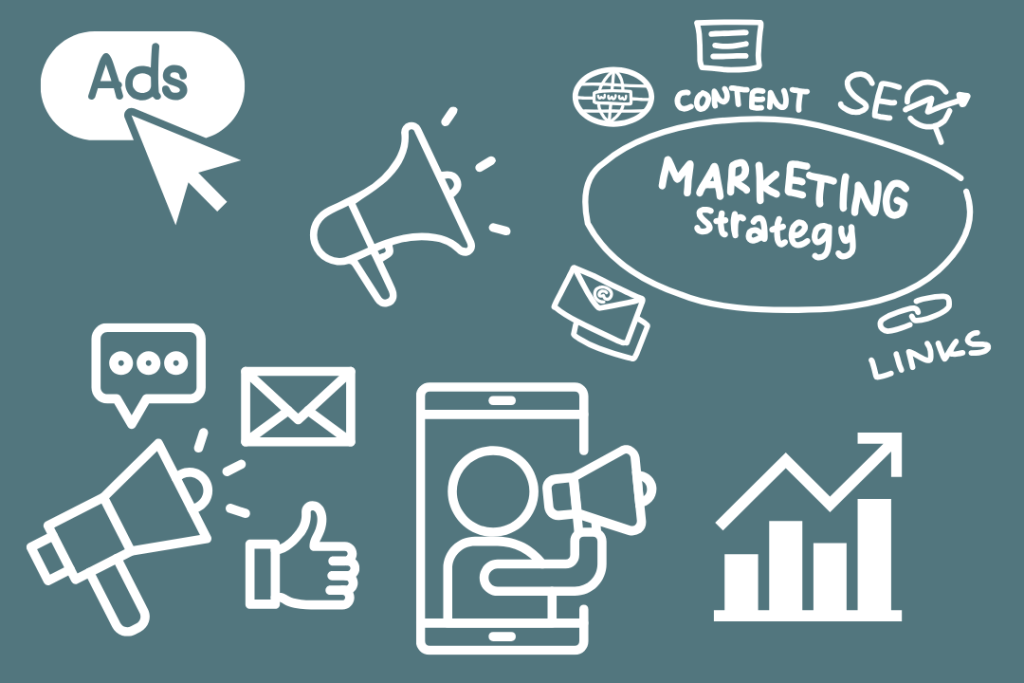
What Makes a Marketing Strategy Actually Work in 2025?
With new platforms, smarter algorithms, and ever-evolving buyer behavior, the marketing playbook keeps changing. What worked in 2022 won’t cut it now—and generic strategies won’t deliver real results in 2025. If your brand is still treating marketing like a checklist, it’s time to rethink everything.
So what does work? A successful 2025 marketing strategy blends timeless fundamentals with new-era adaptability. It’s not about chasing trends—it’s about building something built to evolve.
Here’s what makes a marketing strategy actually effective in 2025—and how your business can get (and stay) ahead.
1. Strategy Comes Before Channels
Too many businesses jump straight into tactics—“We need to run Instagram ads,” or “We should start a podcast”—without knowing why. In 2025, high-performing brands are those who get crystal clear on their audience, goals, and positioning before deciding where or how to show up.
Start with:
- Who are we trying to reach?
- What do they actually care about?
- How does our offer solve their problem better than anyone else?
Only then do you pick the right platforms. A strong 2025 marketing strategy is driven by clarity, not noise.
2. Messaging That’s Human, Not Hype
People are tired of being sold to. They’re looking for connection, relevance, and authenticity. The brands that win are those who talk to their audience—not at them.
In 2025, messaging that performs is:
- Simple, clear, and jargon-free
- Emotionally resonant (not just focused on features)
- Value-first, with a helpful or relatable angle
Whether it’s a paid ad or a blog post, if your content doesn’t feel real, it won’t land. Your 2025 marketing strategy needs to prioritize message-market match, not just flashy campaigns.
3. Full-Funnel Thinking
Marketing is no longer just about awareness. It’s about nurturing the customer journey from “never heard of you” to “repeat buyer.” A one-size-fits-all approach doesn’t work anymore.
Modern strategies must include:
- Top-of-funnel (awareness) content to introduce your brand
- Middle-of-funnel (consideration) campaigns to build trust
- Bottom-of-funnel (conversion) tactics to close the deal
- Post-purchase engagement to boost loyalty and referrals
A complete 2025 marketing strategy maps content and campaigns to each stage of the buyer journey. The goal? Build momentum at every step—not just at the finish line.
4. Smarter Data, Simpler Dashboards
In 2025, data overload is real—but insight is power. The most successful marketers don’t chase vanity metrics like impressions or likes. They focus on what actually drives ROI.
Key things to measure:
- Customer acquisition cost (CAC)
- Conversion rates by channel or stage
- Lifetime value (LTV) of customers
- Retention and repeat purchase behavior
And here’s the secret: the best insights often come from the simplest reports. Build a dashboard you’ll actually look at—then use that data to guide creative, targeting, and spend in your 2025 marketing strategy.
5. Cross-Department Collaboration
Marketing isn’t just the marketing team’s job anymore. In 2025, growth-focused brands break silos between departments. Sales, customer service, and even product teams all play a role in shaping campaigns that convert.
Why it matters:
- Sales knows the real objections your prospects have
- Customer service hears recurring pain points daily
- Product teams understand what users love (and hate)
Your marketing strategy becomes exponentially more effective when it’s informed by real conversations—not just assumptions. The best 2025 marketing strategy is a shared one.
6. Agility Over Perfection
The digital world moves too fast for six-month planning cycles that never change. In 2025, the best marketing strategies are built to evolve.
Yes, you need a solid roadmap. But you also need to test, learn, and adjust as data comes in. Campaigns should launch faster, messaging should evolve based on feedback, and creative should shift based on what actually resonates.
Success will go to the brands willing to move quickly, take smart risks, and pivot when needed. Agility isn’t a backup plan—it’s baked into every great 2025 marketing strategy.
What You Can Do Right Now
If your marketing still feels reactive, misaligned, or outdated, you’re not alone—but you do have options. Start by simplifying your strategy:
- Focus on one key audience
- Identify 2–3 core messages that matter to them
- Choose channels that fit your strengths
- Set measurable goals you can track monthly
Then, build from there. The most impactful changes often come from tightening your focus, not adding more noise.
Let’s Build a Smarter Strategy Together
Marketing in 2025 isn’t about doing more—it’s about doing what works. With the right blend of clarity, creativity, and agility, your business can grow smarter, not just louder.
Ready to craft a 2025 marketing strategy that’s built to perform, evolve, and actually drive growth? Our team can help you align your message, channels, and execution into a plan that gets results now—and next quarter. Let’s make your strategy your strongest asset.
Author: Heather Berryhill
